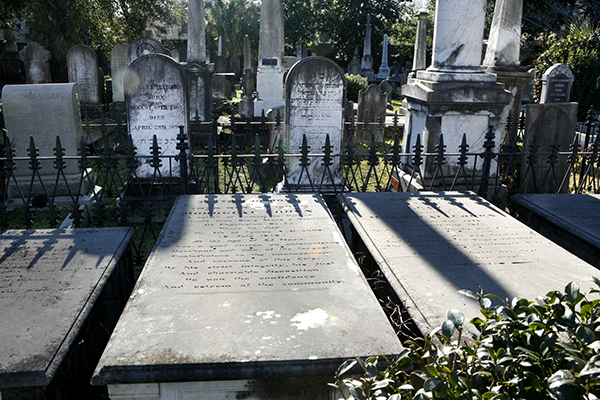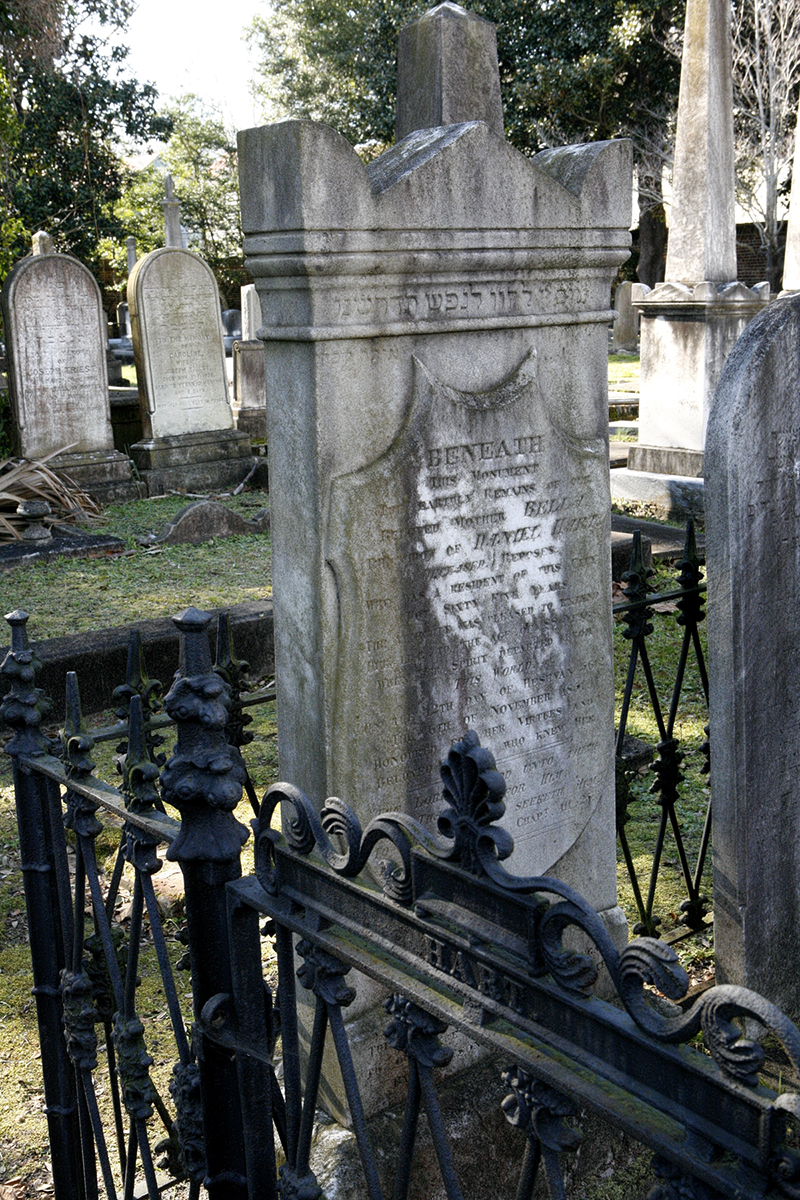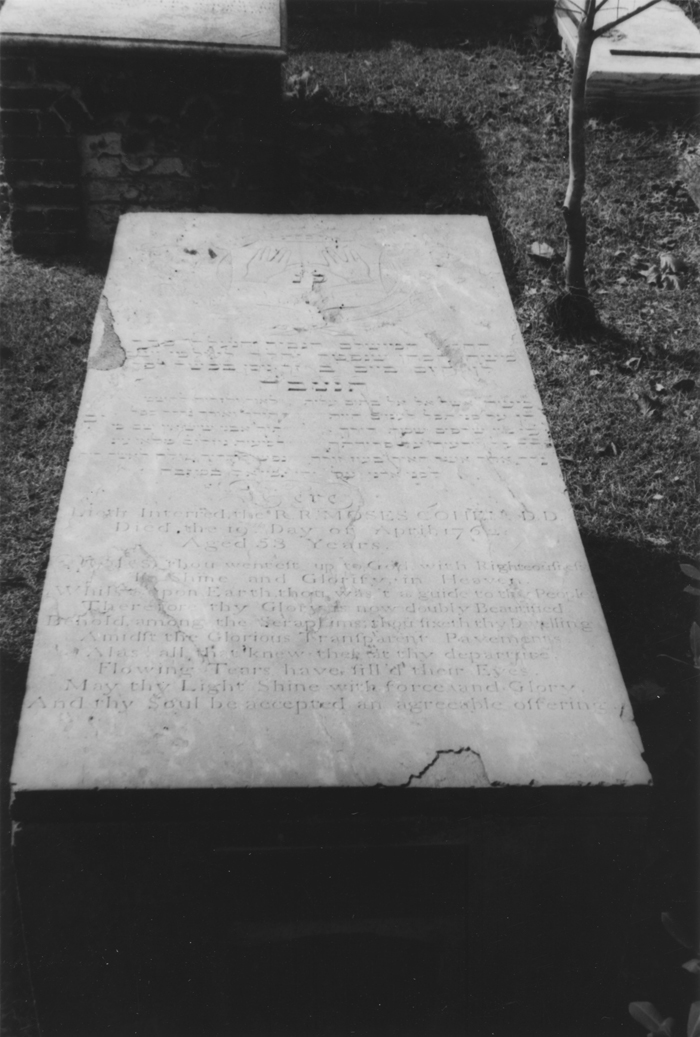Coming Street Cemetery
One of the oldest Jewish burial grounds in the South
Note that this point is off the historical map, as cemeteries were typically placed at removed locations. Charleston grew to encompass this early cemetery over the next century.
189 Coming Street. This burial ground, outside city limits until 1849, began as a private family cemetery, the land purchased in 1754 by Isaac DaCosta, a founder and hazanA cantor or prayer leader in a synagogue. During the eighteenth and nineteenth centuries, when there were few ordained rabbis in the United States, congregations often were led by hazanim, who were commonly referred to as “Reverend.” of Kahal Kadosh Beth Elohim. In 1764, the year he resigned as reader, DaCosta conveyed the property to the congregation in return for ₤70, stipulating that it be used for those “who do and shall conform to the Jewish rites and ceremonies in general” and the regulations of KKBE in particular. (At the time, congregants were enmeshed in a conflict between people of Sephardic descentJews of Spanish and Portuguese extraction, distinguished from the Ashkenazim by their religious rituals, customs, foods, and pronunciation of Hebrew. and a growing Ashkenazi contingentJews from Central and Eastern Europe, distinguished from the Sephardim by their religious rituals, customs, foods, and pronunciation of Hebrew..) Records suggest that over 800 burials have taken place in this acre of land, with several hundred tombstones remaining.
The oldest extant tombstone dates to 1762, marking the burial place of DaCosta’s friend and fellow hazan, Moses Cohen. When the congregation was split by controversies, the cemeteries felt it, too. Two family burial grounds were in use in this era—one founded by the Tobias family and another by the DaCostas, located between Hanover and Amherst streets, where Isaac DaCosta was laid to rest in November 1783. When reform split the congregation in the 1840s, the breakaway traditionalist congregation Shearit Israel acquired an adjacent parcel slightly more elevated than KKBE’s graveyard and established its own cemetery separated by a tall brick wall. David Lopez, prohibited from burying his Christian wife in the hallowed ground, acquired a small plot north of Shearit Israel’s and built a tomb for Catherine Dobyns Hinton more elaborate than any monument in sight. Restoration of the cemetery is ongoing.
For more information on the restoration of the Coming Street Cemetery see KKBE’s cemetery page.
For more information see The old Jewish cemeteries at Charleston, S.C. by Barnett A. Elzas.

Coming Street Cemetery, 2006
See The old Jewish cemeteries at Charleston, S.C. by Barnett A. Elzas.
Coming Street Cemetery, 2006.
See The old Jewish cemeteries at Charleston, S.C. by Barnett A. Elzas.
Catherine Lopez tomb, 2006
Stone canopy tomb of Catherine Dobyns Hinton Lopez (1814-1843) and her infant son Charles Hinton Lopez (1842-1843), Coming Street Cemetery, 2006.
Coming Street Cemetery, no date
